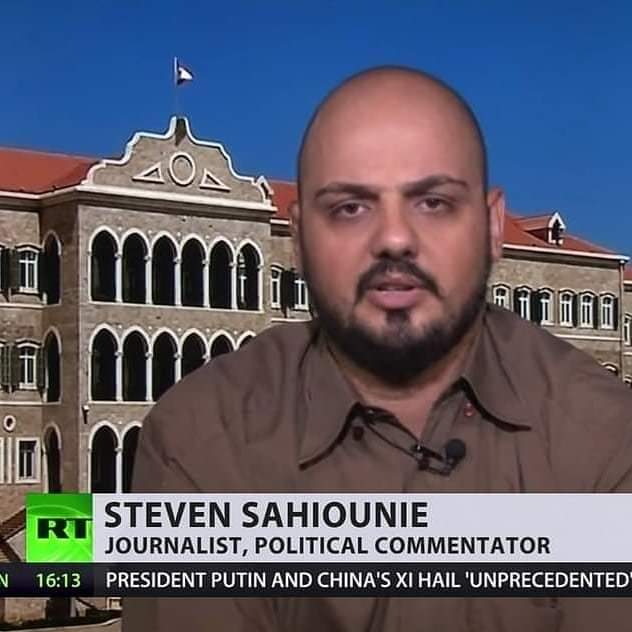By: Steven Sahiounie, journalist and political commentator
A fragile calm hangs over Lebanon in early October 2025, a year marked by significant political shifts, a persistent economic crisis, and ongoing security tensions along its southern border. While the specter of widespread conflict has somewhat receded following a ceasefire in November 2024, the nation grapples with a complex web of internal and external pressures that continue to shape its trajectory.
The political landscape has been dominated by the new government's efforts to assert state authority, most notably through a plan to disarm Hezbollah. This initiative, backed by a significant $230 million aid package from the United States aimed at bolstering the Lebanese Armed Forces (LAF), has been a point of major contention. Prime Minister Nawaf Salam's government has tasked the LAF with formulating a strategy to ensure all weapons in the country are under state control by the end of the year. However, Hezbollah has vehemently rejected these calls, insisting that any discussion of disarmament is contingent on a complete cessation of Israeli military operations in Lebanon and a withdrawal from occupied territories. This impasse was highlighted in a recent cabinet meeting where Shi'a ministers, including those from Hezbollah, walked out in protest of the disarmament plan.
Economically, Lebanon remains in the throes of a severe crisis that began in late 2019. Despite a reported 19.8% increase in GDP in 2024 following the ceasefire, the economy is still down 40% from its pre-crisis levels. The World Bank estimates that the conflict in 2024 caused $14 billion in damages and economic losses, with reconstruction needs pegged at $11 billion. The daily lives of Lebanese citizens continue to be impacted by hyperinflation and restrictions on banking withdrawals. While the government has made some strides in implementing reforms required by the International Monetary Fund, such as amending the bank secrecy law, progress on a comprehensive financial sector overhaul remains slow. Projections for 2025 and 2026 indicate a potential for further economic contraction, exacerbated by a significant drop in public revenues and the immense cost of rebuilding.
The security situation, particularly along the southern border with Israel, remains volatile. Despite the ceasefire, Israel has continued to conduct drone strikes and airstrikes in southern Lebanon, citing the targeting of Hezbollah assets. The United Nations has reported over 100 civilian fatalities in Lebanon due to Israeli strikes since the cessation of major hostilities. For its part, Israel maintains a military presence at five locations within southern Lebanon, a key point of contention for the Lebanese government and Hezbollah. The United Nations Interim Force in Lebanon (UNIFIL) continues to patrol the region, but its mandate is set to end by December 2026, raising concerns about future stability.
On the social front, the country is also dealing with the recent surrender of Fadel Shaker, a pop star turned militant who had been a fugitive for over a decade. His turning himself in to military intelligence is seen as a significant development as the army begins to address the issue of weapons in Palestinian refugee camps, which have long been outside the state's full control.
As Lebanon navigates these multifaceted challenges, the path forward remains uncertain. The government's push for disarmament is a high-stakes endeavor that could either lead to a more stable and sovereign state or trigger further internal strife. The economic recovery is contingent on both internal reforms and significant international support. And the delicate security balance in the south is perpetually at risk of unraveling. The coming months will be crucial in determining whether Lebanon can move towards a more stable and prosperous future or if it will remain mired in the crises that have defined its recent past.
Steven Sahiounie of MidEastDiscourse interviewed Yehya Chamas, a journalist at Al Nahar media, concerning the key issues facing Lebanon.
1. Steven Sahiounie (SS): What are the implications of Israel's recent airstrikes on Hezbollah's Radwan Force in southern Lebanon for regional stability?
Yehya Chamas (YC): Israel is using military escalation against the Radwan Force as leverage in US- and French-mediated talks. The objective is to pressure Lebanon to accept the force's withdrawal north of the Litani River or its disarmament, effectively tying the country's reconstruction and political stability to these conditions.
Crucially, the assassination of top leaders, including Ibrahim Aqil, has already severely weakened this Hezbollah unit.
2. SS: How is the Lebanese government responding to Israel's repeated violations of the November 2024 ceasefire agreement?
YC: The Lebanese government primarily responds to repeated Israeli violations of the November 2024 ceasefire agreement through diplomatic channels and appeals to the international community.
This response is articulated through the following key points:
a. Strong Condemnation: Asserting that the Israeli attacks constitute a "blatant violation of the ceasefire agreement" and international resolutions, as stated by Prime Minister Nawaf Salam.
b. Immediate Call to Action: Calling on the guarantor nations (the United States and France) and the international community to "act immediately to compel Israel" to halt these attacks and respect Lebanon's sovereignty.
(Note: You can view every article as one long page if you sign up as an Advocate Member, or higher).





